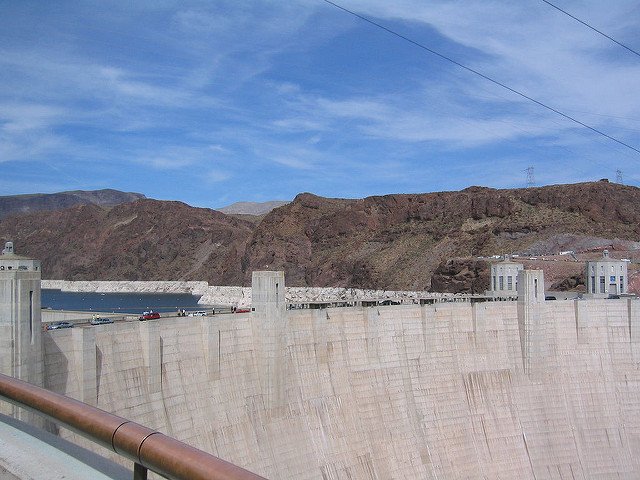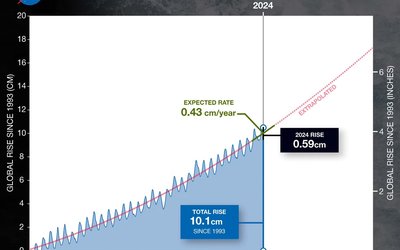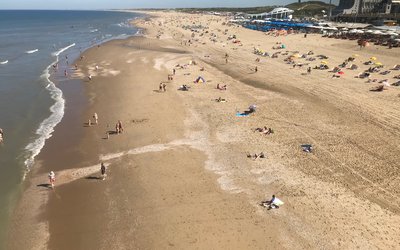Coastal erosion and coastal floods
More water stored on land slowed down sea level rise in last decade
April 18, 2016

Over the last years, climate-driven changes such as large-scale floods have increased the volume of water on land. This increase slowed down sea level rise.
Over the past century, sea level rose at an average rate of 1.5 ± 0.2 mm/year, increasing to 3.2 ± 0.4 mm/year during the past two decades. The increase in the rate of rise is attributed to an increase in mass loss from melting glaciers and ice sheets and to the expanding volume of oceans due to ocean warming.
There are more contributions to sea level rise than glaciers, ice sheets and ocean warming, however. The amount of water that is stored on land is not constant. The amounts of snow, surface water, soil moisture, and groundwater storage vary in time, due to the seasons, longer-term (decadal) variations, and due to human impacts such as the storage of water in reservoirs. Thus, sea level rise varies in time as well, due to changes in the global water cycle. With respect to the global water cycle, two components can be distinguished: human-driven changes and climate-driven changes.
Human-drive changes in land water storage include the direct effects of groundwater extraction, irrigation, storage in reservoirs, wetland drainage, and deforestation. Climate-driven changes refer to events such as large flooding periods in the upper Missouri River basin, and recovery from drought in the Amazon and the Zambezi and Niger basins in Africa.
The contribution of human-driven has been assessed by the IPCC in their latest report: these changes contribute 0.38 mm/year to the annual averaged sea level rise. The contribution of climate-driven changes has also been assessed, over the period 2002 - 2014: -0.71 ± 0.20 mm/year. The negative sign indicates that climate-driven changes have been a loss of water from the oceans over the period 2002 – 2014. Thus, over the last years, climate-driven changes in the global water cycle have increased the volume of water on land and slowed down sea level rise.
Source: Reager et al., 2016. Science 351 (6274): 699-703.
Photo: Chad Scott (www.flickr.com)








